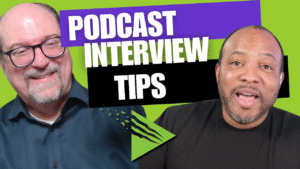Creating content for better SEO results is a challenge that many responsible for content creation face. Produce high-quality content and your ranking will go up. But there is a lot more science AND art to it than just that.
Besides putting out content that your audience will find relevant, your content should be optimized for search engines. It will boost its visibility and help both your content and website rank higher in SERPs. Content created in a way that makes Google (or any other search engine) identify it as relevant and rank it high is called SEO-friendly content. And because SEO continually evolves and changes along with the updates in Google’s algorithm, you should always stay on top of the latest methods for optimizing your content.
With better ranks come reduced bounce rates, higher conversion rates, increased brand awareness, niche authority, and a boost in website traffic. To help your content rank better, Content Monsta comes forward with ten essential SEO tips you should apply to your content.
1. Choose a Topic and Dive Deeper into It
One of the biggest SEO tips for making your content rank higher is creating content that goes deeper into a topic. How does this affect your rankings? Well, Google has put a greater emphasis on content quality, so the quality content that provides exceptional depth soars in rankings.
SEO experts have noticed that low-quality content started ranking lower, even though it has performed above expectations in the past. To create more in-depth content, write long-form articles/blog posts (2,000 words or more) and ultimate guides. Explore topics with many different angles and facets and conduct a more thorough research (including industry publications, sources from digital libraries such as JSTOR, and perform Google Scholar searches for new studies and data).
2. Improve Content Readability
User engagement metrics are among the most important factors that Google takes into account for ranking pages. Your content readability directly affects your user engagement metrics because Google’s algorithm is trying to mimic humans by attempting to read the text as a person would.
As a result, content readability demands have started rising. To improve your content’s readability (and overall user experience), you should:
- Use active voice and shorter sentences
- Format content for skim readers
- Highlight the most important or exciting parts and break long paragraphs
- Use transition words for a better flow and direction. Also, make sure to clean out any grammatical or spelling errors.
3. Add Links from Important Pages
Content that ranks high typically gets a lot of backlinks (both internal and external). It tells Google that we need to crawl a link in the future, so it gets placed in the crawl queue. But it also makes the link more important.
The first thing to do when publishing new or refreshing older content is making sure that you’re linking from and to important pages. These pages may be your resources page, blog, homepage, and links to new content.
These will help both people and search engine robots to find all of your pages and increase your website and content validity. Throw in a few outbound links to reputable sites as well.
4. Choose the Right Keywords
Don’t just sit down, start writing, and deal with SEO when you’re finished. Before you begin, conduct keyword research to find the keywords and phrases that are relevant to your topic.
You can use Google’s suggestions (frequently searched queries that you can use as keyword phrases) or use a keyword research tool. Make sure that the keywords you’re using pertain to your industry, audience, and page content.
Each of your web pages will be about a different topic, so you’ll have to use different keywords as their focus. Once you start writing a blog post or article, use the keywords in the title, main copy, ALT tags, and meta descriptions. Be sure to target keywords in a way that reflects how your audience thinks and searches without being biased by your company’s internal jargon or product names.
5. Add High-Quality Visuals
Inc reports that visual content increases engagement, brand awareness, and message association while enhancing your website’s overall design. Images, videos, illustrations, infographics, and memes are all forms of visual content that have an enormous impact on the way we consume information, and their importance is expected to grow.
Content that contains relevant videos and images generate more views than content without visuals (text-only). People are wired to notice compelling visuals, so be sure to invest in quality visual content to make your content more authoritative, professional, and cohesive for better SEO.
If you cannot create original images for your content, use creator generated images from sites such as pexels.com or unsplash. These are free and are refreshed often. Just be sure not to select the first images that you see as they may be overused.
6. Optimize Your Images
Well-crafted visuals will make your content more interesting, engaging, and shareable. What’s also important is to optimize your images by providing the ALT tags and adding keywords to them.
This can be even more critical if you download stock images. Create your own names and ALT tags for them so that they are unique to your site. Make sure to optimize the size of the image because large images will hurt your SEO by slowing down your site’s load time. Resize your images without compromising the quality or visibility with a simple image editor.
7. Improve Page Speed
The slower your page speed, the more annoyed and frustrated you will make your website’s visitors. It hurts your site’s user experience, which is a vital ranking factor.
Even a page that visually loads fast, may not appear that way in Google’s eyes. Avoid a slow sight penalty by improving your page speed and bear in mind that most users won’t wait longer than 10 seconds for a web page to load and Google wants it under 5 seconds.
First, use Google’s PageSpeed Insights to evaluate your page speed. If page speed could use some boost, you can improve speed by:
- Enabling file compression
- Reducing redirects
- Minifying HTML, JavaScript, and CSS
- Leveraging browser caching
- Optimizing images
- Improving server response time
- Using a CDN (Content Distribution Network)
8. Fix Broken Links
It sometimes happens that the outbound links that lead to authority websites get broken, and it can crush your search engine ranking. Use Google Analytics or other tools that can help you detect any broken links on your website.
Google doesn’t penalize for having a link that leads to a 404 page. However, it leads to bad user experience and a higher bounce rate, which are critical factors when it comes to ranking in SERPs.
9. Leverage the Power of Infographics
Infographics can generate thousands of visitors and backlinks, which makes them excellent tools for achieving better rankings. A good infographic only needs two things: great content and great design.
Couple the infographic with a quality long-form post for some extra ranking power, as Google cannot index the text on the infographic as well, especially if there are unique fonts and arrangments. An infographic is useful for SEO because it can make heavy and boring topics easier to understand and more enjoyable. It can represent your message in a visually pleasing and effective way (improving retention time), especially to mobile phone users.
10. Social Sharing
Social sharing is another method that can indirectly affect your rankings. Whenever you publish a new piece of content, share it on social media, and pay close attention to content aggregators (such as Reddit) because they create links for Google to crawl. Social networks like Facebook, Twitter, Instagram, and LinkedIn will help by redirecting more users to your content and increasing your website traffic.
Highly ranked content that drives qualified leads and traffic is always focused on users. Improving your content marketing with practices that benefit your audience is the way to see improved rankings and ROI.
Want to learn more? Talk to a professional Content Monsta!
- The Three L’s Every Podcast Host Needs: Listen, Learn, and LeadToo many new podcast hosts make the mistake of scripting every word – missing the heart of what makes podcasts work: real, unscripted conversation. This article explores how the best shows are built on curiosity, not checklists. Learn why Content Monsta’s producers say to ditch the pre-interview, bring just a few strong questions, and focus on the three L’s: Listen, Learn, Lead.
- How to Build a Revenue Machine by Aligning Sales and Marketing with Bruce ScheerBruce Scheer, author of Inspire Your Buyers, breaks down how sales and marketing misalignment kills deals in the final 30% of the buying process – and how a unified value narrative can transform your go-to-market strategy.
- Designing a Winning Podcast Structure: Lessons from Behind the ScenesIf your podcast or video content isn’t landing, structure may be the problem. At Content Monsta, we’ve learned that leading with a strong hook, cutting the fluff, and mapping out every element – from intros to promos – keeps audiences engaged and improves results. Here’s how to structure your content for maximum impact.









